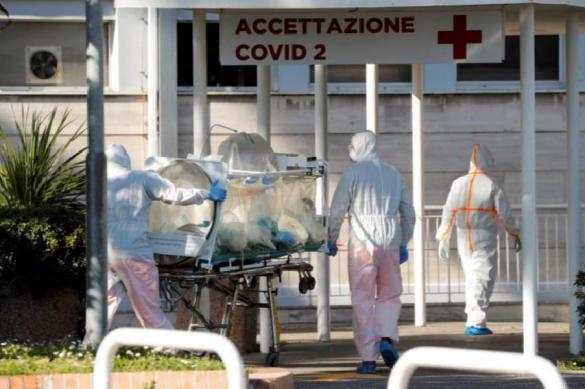Reason behind Italy coronavirus catastrophe: Government wasted time
The Italian Prime Minister under accusation: Covid-19 emergency declaration signed on January 31st but nationally implemented only in March.

It seems that the Italian government wasted a whole month before activating all the necessary anti-Covid19 measure on a national level. The issue was raised in the past days by several Italian newspapers and sites, including "Repubblica".
As a matter of fact, on page 7 and 8 of February 1st's Gazzetta Ufficiale della Repubblica Italiana, which is the official journal of the Italian government, it is clearly stated that on Jan 31st 2020 the Minister of Health expressed the necessity to proceed with the declaration of the state of national emergency.
The document, published immediately after the emergency status launched by the World Health Organization, asked for extraordinary measures (on national and international level) to be taken in order to face the epidemic.
As a consequence, the resolution, which was signed by Prime Minister Giuseppe Conte, declared the emergency status for the duration of 6 months and starting from the date of the signature of the document, on January 31st 2020, which means up until July 31st. However, no serious measures on a national level were taken until March 9th.
A brief timeline shows the sequence of main events:
- On February 1st, the declaration of emergency, signed by PM Conte the previous day, is published on the Gazzetta Ufficiale. The previous day, a Chinese couple coming from Wuhan had tested positive to Covid-19 and had been hospitalized in Rome.
- Between February 19th and February 20th, some hospitalized patients began to test positive and the epidemic broke out in the Lodi and Padua provinces.
- On February 22nd, the government announced a new decree imposing the quarantine of more than 50,000 people from 11 different municipalities in Northern Italy. The quarantine zones are called the Red Zones and the areas in Lombardy and Veneto outside of them are called the Yellow Zones.
- On February 26th, Director of the Italian National Institute of Health Franco Locatelli announced that Covid-19 tests would only be performed on symptomatic patients, as 95% of previous tests were negative.
- On February 27th, schools in different regions of Italy began to close down, according to decisions of local governors.
- On March 1st, the Government approved a decree to organize the containment of the outbreak. In the decree, the Italian national territory was divided into three area: a red zone (which included the areas where the epidemic broke out and where the whole population was in quarantine); a yellow zone (Lombardy, Emilia Romagna and Veneto) where all social and sport events were suspended and schools, theatres, clubs and cinemas shut down; the rest of the Italian territory, where preventive safety measures were advised and performed.
- On March 4th, the Italian government imposed the shutdown of all schools and universities nationwide for two weeks as the country reached 100 deaths from the outbreak.
- On March 7th, the Italian government approved a decree to lock down Lombardy and 14 other provinces in Veneto, Emilia-Romagna, Piedmont and Marche, involving more than 16 million people.
- On March 9th, Prime Minister Conte announced that the whole Country was placed on lockdown.
It is yet unclear why Conte's government waited so long to implement nation wide measures despite the fact that the emergency declaration had already been signed on January 31st and with the perspective of a six-month period.
As a matter of fact, throughout February, several left-wing politicians had spoken against proposals by Lombardy and Veneto's presidents to close borders and take tight measures, defining them "racist" and inviting people to hug Chinese people and to eat at Chinese restaurants. Among them, Milan's mayor Beppe Sala, Florence mayor Dario Nardella, Tuscany's president Enrico Rossi.
Milan's Partito Democratico (PD) had even launched the initiative "Milan doesn't stop", encouraging social life, with PD's leader, Nicola Zingaretti, taking part in the event and defining Covid-19 "a simple flu". Zingaretti later tested positive for Covid-19 and was placed on quarantine.
Lawyer Guido Magnisi, from Bologna's court, raised the question:
"Why no maximum emphasis was given to a state of emergency that was not only expected and recognized on an international level, but also declared (by the Italian government (since January 31st and with a duration of six months?"
Magnisi then points out how this lack of proper emergency management now forces Italy to chase the virus with draconian measures.
Italy now counts 7,503 deaths due to Covid-10 with 74,386 infections, and many citizens are pondering if such a war-like death toll could have been prevented by immediately implementing the state of emergency, as declared on January 31st by the Italian government. It is yet unclear why the authorities waited so long to act, while some political exponents were even encouraging people to go out and socialize.
Subscribe to Pravda.Ru Telegram channel, Facebook, RSS!


